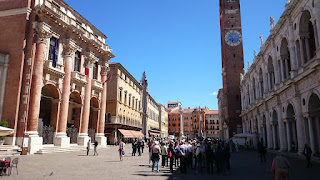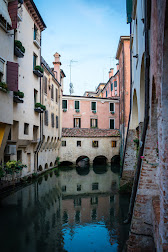Liberation of Fornovo di Taro
How Brazilian soldiers hastened Nazi capitulation
The town of Fornovo di Taro in Emilia-Romagna acquired a significant place in Italian military history for a second time on this day in 1945 when it was liberated from Nazi occupation by soldiers from the Brazilian Expeditionary Force fighting with the Allies. Under the command of General João Baptista Mascarenhas de Morais, the Brazilians marched into Fornovo, which is situated about 13km (8 miles) south-west of Parma on the east bank of the Taro river, at the conclusion of the four-day Battle of Collecchio. It was in Fornovo that the 148th Infantry Division of the German army under the leadership of General Otto Fretter-Pico offered their surrender, along with soldiers from the 90th Panzergrenadier Division and the 1st Bersaglieri and 4th Mountain Divisions of the Fascist National Republican Army. In total, 14,779 German and Italian troops laid down their arms after Fretter-Pico concluded that, with the Brazilians surrounding the town, aided by two American tank divisions and one company of Italian partisans, there was no hope of escape. Although the total capitulation of the German and Fascist armies in Italy was not officially announced until 2 May in Turin, the surrender in Fornovo effectively brought the war in the peninsula to an end. Read more…
__________________________________
Rafael Sabatini – writer
Author of swashbucklers had the ‘gift of laughter’
Rafael Sabatini, who wrote successful adventure novels that were later made into plays and films, was born on this day in 1875 in Iesi, a small town in the province of Ancona in Le Marche. Sabatini was the author of the international best sellers, Scaramouche and Captain Blood, and afterwards became respected as a great writer of swashbucklers with a prolific output. He was the son of an English mother, Anna Trafford, and an Italian father, Vincenzo Sabatini, who were both opera singers. At a young age he was exposed to different languages because he spent time with his grandfather in England and also attended school in both Portugal and Switzerland, while his parents were on tour. By the time Sabatini went to live in England permanently, at the age of 17, he was already proficient in several languages. Although his first attempts at writing were in French when he was at school in Switzerland, he is said to have consciously chosen to write in English, saying at the time that all the best stories had been written in English. Sabatini wrote short stories in the 1890s, some of which were published in English magazines. Read more…
___________________________________
Giovanni Antonio Pellegrini - painter
Venetian artist who made mark in England
The painter Giovanni Antonio Pellegrini, who is regarded as one of the most important Venetian painters of the early 18th century, was born on this day in 1675 in Venice. He played a major part in the spread of the Venetian style of large-scale decorative painting in northern Europe, working in Austria, England, France, Germany, and the Netherlands. With a style that had influences of Renaissance artist Paolo Veronese and the Baroque painters Pietro da Cortona and Luca Giordano, he is considered an important predecessor of Giovanni Battista Tiepolo in the development of Venetian art. A pupil of the Milanese painter Paolo Pagani, Pellegrini began travelling while still a teenager, accompanying Pagano to Moravia and Vienna. After a period studying in Rome, he returned to Venice and married Angela Carriera, the sister of the portraitist Rosalba Carriera. Soon afterwards, he accepted the commission to decorate the dome above the staircase at the Scuola Grande di San Rocco in 1709. Pellegrini spent a significant part of his career in England, where he was invited, along with Marco Ricci, the nephew of Sebastiano Ricci, by Charles Montagu, the future Duke of Manchester. Read more…
_____________________________________
Sara Errani -- tennis champion
Five-times Grand Slam doubles winner reached No 5 in singles
Tennis star Sara Errani, who was born in Bologna on this day in 1987, is arguably the most successful Italian tennis player of all time. She and partner Roberta Vinci's career record of five Grand Slam doubles titles is unparalleled. No other Italian combination has won more than one Grand Slam title and no Italian singles player has won more than two. Nicola Pietrangeli, who was ranked the No 3 men's singles player at his peak, won the French Open championship in 1959 and 1960 and was runner-up in Paris on two other occasions, as well as winning the men's doubles at the French in 1959, with fellow Italian Orlando Sirola. But Errani and Vinci have won on all surfaces, achieving a career Grand Slam in 2014 when they triumphed in the women's doubles at Wimbledon, having already won the French and US titles in 2012 and the Australian in both 2013 and 2014. They are only the fifth pairing in tennis history to complete a career Grand Slam. Errani also achieved a world ranking of No 5 in singles in 2013, having been runner-up to Maria Sharapova in the 2012 French Open as well as winning five WTA singles titles in the space of 12 months. Read more…


.jpg)
.jpg)
.jpg)


.png)




.jpg)
.jpg)



.jpg)
.png)
.jpg)









